- Details
- Hits: 5797
Station: Iron Mountain, MI
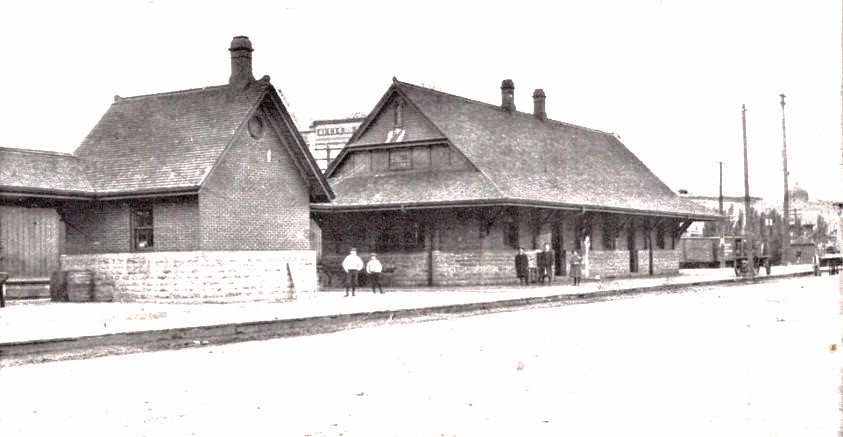
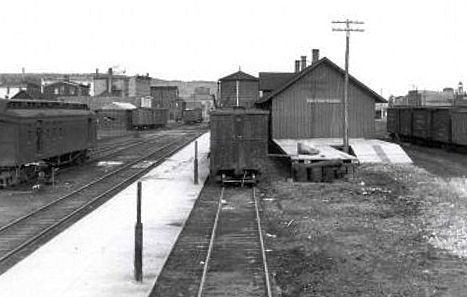
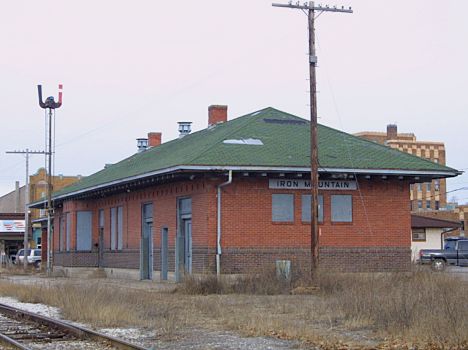
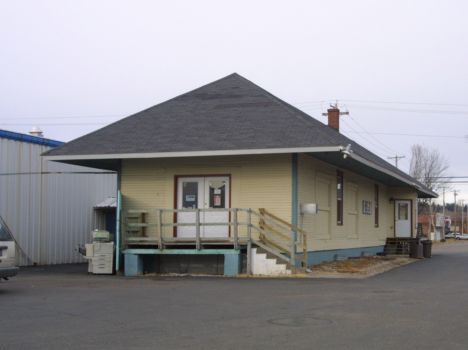
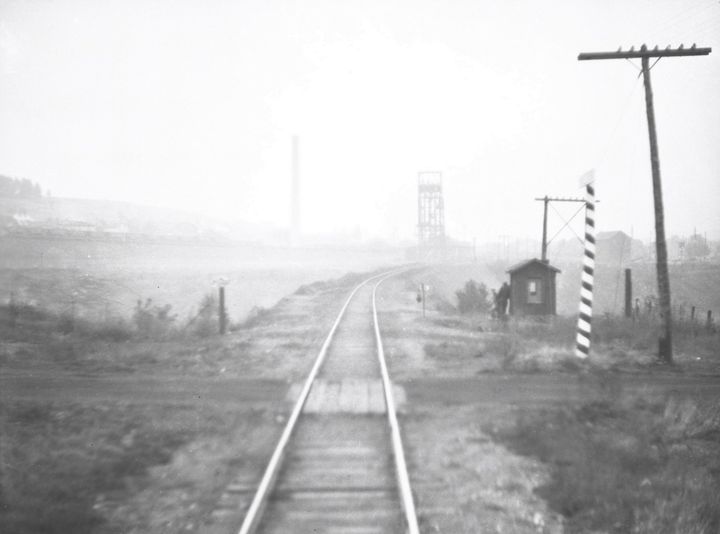 Iron Mountain was settled around 1877 near the Chapin Mine in Dickenson County. The town became a village in 1887 and a city in 1889.
Iron Mountain was settled around 1877 near the Chapin Mine in Dickenson County. The town became a village in 1887 and a city in 1889.
Iron Mountain had several railroads serving it. The Chicago & Northwestern (C&NW) came from Escanaba via Powers in 1877. That line continued west via Antoine and Florence, Wisconsin in 1880 reaching Iron River (and Crystal Falls via a branch) in 1882. The Milwaukee Road came north from Green Bay in 1887. Another route from Escanaba to Antoine was built in 1891 and quickly became a C&NW branch line allowing two routes for ore cars in and out of the Iron Mountain area. The Wisconsin and Michigan railroad reached the area around 1903.
Image info: Top, a front view of the C&NW Iron Mountain depot from the early 1900's. This was on North Stephenson Avenue (US-2/141). Note that the tracks for this station are on the other side. 2nd image, an old photo of the Milwaukee Road freight house at Iron Mountain. This building stood east of the passenger station across C Street. The freight house was the original MILW passenger station. It was torn down sometime in the 1970's. [Greg Bunce]. 3rd photo, the MILW Ion Mountain depot. It still has semaphore signals in 2003 under E&LS control. [Dale Berry] 4th photo, the Wisconsin and Michigan freight house which is located near the MILW depot. The W&M used the MILW passenger station for their trains. [Dale Berry]. 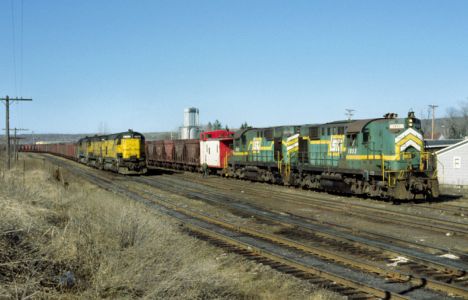 5th photo, the Milwaukee Road right of way north of Iron Mountain at the Chapin Mine in 1935. [John Barringer photo, Greg Bunce collection]. 6th photo, CNW and E&LS ore trains pass at Iron Mountain. April, 1980. [Neil Plagens]
5th photo, the Milwaukee Road right of way north of Iron Mountain at the Chapin Mine in 1935. [John Barringer photo, Greg Bunce collection]. 6th photo, CNW and E&LS ore trains pass at Iron Mountain. April, 1980. [Neil Plagens]
Notes
The MILW and C&NW both had water towers at Iron Mountain. The C&NW had a tank with two spouts at the east end of the yard in Antoine (between the legs of the wye) and the MILW had a water column east of their depot. [GB]
Historian Greg Bunce provided the #4 photo at left looking north at Kent Street crossing with the Hamilton Mine head frame in the background. If you look next to the track you can see fill that has been dumped. The track here was constantly settling due to sinking ground from the Chapin Mine and the railroad was constantly raising and lining the track. It appears that the railroad had a watchman at this point (see booth). The speed limit across the fill was 8 mph. In 1938, the Milwaukee Road abandoned the track across the fill and changed the alignment to the C&NW, which is the current route that the E&LS uses (in 2020).
The C&NW depot here was on US2/US141 between Hughit and Ludington Streets. The depot continues as of 2022 as a commercial business.
The W&M railway line to Iron Mountain south of town passed over the C&NW main line on a overhead bridge at C&NW milepost 27.6.
The C&NW line through Iron Mountain appears to have automatic block signals in 1917. [CNWV]
Iron Mountain was in section 31 of T40N-R30W.
The lead to the Pewabic Mine went east from the C&NW main line at milepost 28.3 near "H" street. The lead to the Millie Mine went northeast just north of the C&NW depot.
Time Line
1888. December 19. An entire block in Iron Mountain was destroyed by fire December 19, causing a loss of $100,000. [WEX-1888-1227]
1889. The C&NW station at Iron Mountain was built in 1889 at 310 Stephenson Avenue. It is a single-story rectangular brick building resting on a finished ashlar foundation and is 20' by 75' long with a gabled roof and wide overhanding eaves supported by wooden brackets. It still exists as a retail business. [UPM]
1890. The Milwaukee Road built a freight house on East C Street at Iron Mountain about 1890. [UPM]
1893. Forest fires are raging all over this region and doing much damage. Norway was threatened with destruction yesterday afternoon. An engine and several hundred men went from here to assist in fighting the flames. Railway companies experienced much difficulty in saving bridges. [DFP-1893-0522]
1893. The Chicago, Milwaukee & St. Paul company is building a new turntable just south of G street. The old one, near the depot, is to be taken up. [RTR-1893-1014]
1895. The freight station was the former passenger station and was built in 1895 at Fourth Ave. and Third Street, It was a simple wood structure, single floor with a gabled roof. It was 30' by 90' with six 15' doors facing the tracks. [UPM]
1896. The St. Paul depot platform was crowded Wednesday with "lumber jacks" ready to go on the spring drive. Attached to the north bound passenger train was one extra coach filled with men engaged by the Fence River Logging Co. They were joined here by fully one hundred men. Word has been received that the streams are opening up and the ice has so far disappeared that there are favorable indications that the work will be started immediately. The Kirby Carpenter Co. will employ over a hundred men driving the Paint river and they expect to send up some crews in a week or so. Several hundred men will be employed on the drive and these men will be going up steadily from now on. [RTR-1896-0410]
1897. HOBOS GALORE. A Well Organized Gang are Keeping Tavern at Lawndale. They know which of the houses are easy to work and where dogs are kept. No town in the upper peninsula is bothered more with hobos than Iron Mountain, and a well organized gang are making their headquarters in a little shanty at Lawndale. Almost every house in the city is visited by these people, who solicit "hand outs" from door to door, and when one of the missionaries gets all the "chuck" he can comfortably carry, he struts off to the headquarters and turns it into the commissary department of his "lodge." In this way and what they can steal from people living in the vicinity a goodly supply is kept in store.
The police are active in their endeavor to break up the gang, but no sooner do they succeed in running a portion of them out of town than another gang take their place. From one of the police officers who visited the camp at Lawndale, the reporter learns that one of the old-timers is at work on a combination map, text book and directory of Iron Mountain, such as is used in other towns. The officer says he saw a copy of an original drawing of the city of Iron Mountain, which gives the streets with reference marks on the margin of the map, which correspond with marks in certain localities which are designated as "easy to work," others where money is obtained, and also where there are dogs, so that when there is a want to be filled, the "Brigadier General" knows exactly where to send for it. The police intend to rid the city of this gang of hobos, and no efforts will be spared to bring about the desired result. [RTR-1897-0605]
1901. The Milwaukee Road depot at Iron Mountain was badly damaged by fire last Wednesday. The flames were checked by firemen before the whole building was consumed. Loss of $2,000. [DD-1901-0622]
1902. The MILW replaces a 70 foot wooden turn table with a steel table costing $3,000. [MCR-1902]
1908. Toilet rooms are built inside the C&NW Iron Mountain depot. [CNWV]
1909. The Wisconsin & Michigan railroad uses the MILW depot at Iron Mountain. [MCR-1909]
1910. The Milwaukee Road station here was built about 1910, replacing the former station which became a freight station. The new station was rectangular 25' x 100' with a hipped roof and an adjoining covered passenger platform 25' wide and 30' long. The station still exists. [UPM]
1918. The MILW had an operator at Iron Mountain depot around-the-clock. The C&NW had a station agent during the day at Iron Mountain. [TRT]
Industry
- Von Platen Lumber Company had a significant site on what is currently the Veterans Administration hospital in 1917. The lead to this property went southwest from the C&NW at milepost 28.0. [CNWV]
Bibliography
The following sources are utilized in this website. [SOURCE-YEAR-MMDD-PG]:
- [AAB| = All Aboard!, by Willis Dunbar, Eerdmans Publishing, Grand Rapids ©1969.
- [AAN] = Alpena Argus newspaper.
- [AARQJ] = American Association of Railroads Quiz Jr. pamphlet. © 1956
- [AATHA] = Ann Arbor Railroad Technical and Historical Association newsletter "The Double A"
- [AB] = Information provided at Michigan History Conference from Andrew Bailey, Port Huron, MI

